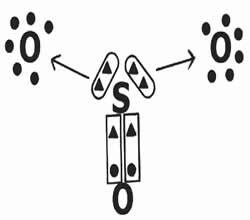THE optical isomerism it occurs when two or more compounds have the same molecular formula, but differ by optical activity, that is, by the deviation of the polarized light plane.
One of the characteristics necessary for optical activity is that the molecule is asymmetric and one way to verify this is by observing if it has at least one atom of asymmetric or chiral carbon.
Briefly, a carbon atom is asymmetric if it has all its ligands different from each other. In cyclic compounds, we take into account the ligands outside the ring and the clockwise and counterclockwise ligands in the ring.
Consider, for example, the case of lactic acid shown below:
oh
│
H3Ç ─ C* ─ COOH
│
H
Note that the four ligands (4 complex structures and not just the 4 atoms immediately attached to the C* atom) are different from each other. Therefore, this molecule has an asymmetric or chiral carbon.
As a result, this compound has two optically active isomers, which are the mirror image of each other and are not superimposable:
oh │ HO
│ │ │
H3Ç ─ C* ─ COOH │ HOOC ─ C* ─ CH3
│ │ │
H │ H
mirror
Do not stop now... There's more after the advertising ;)
These isomers are called enantiomers, in enantimorphs (from the greek enantioes, opposite; morpho, shape) or of optical antipodes. They differ because when polarized light passes through these compounds, one of them shifts the plane of this light to the right (clockwise) and is then called right-handed (symbolized by d or the + sign), while the other enantiomer shifts the plane of polarized light to the left and is called the levogyro (ℓ or -).
The angle at which they deviate from the plane of polarized light is the same, but with opposite signs.
In addition to these two optically active isomers, molecules with only one asymmetric carbon also have an optically inactive isomer, that is, one that does not shift the plane of polarized light. This isomer is called racemic mixture, which consists of a mixture of exactly 50% of the right-hand isomer and 50% of the left-hand isomer. Since the deviations that each of them cause are of the same value, but in opposite directions, one ends up canceling the effect of the other and the result is that the racemic mixture is optically inactive by external compensation.
Briefly, for molecules with an asymmetric carbon atom we will always have:
- 2 optically active isomers (dextrogyro and levogyro);
- 1 optically inactive isomer (racemic mixture).
* Image author: LHcheM
By Jennifer Fogaça
Graduated in Chemistry
Would you like to reference this text in a school or academic work? Look:
FOGAÇA, Jennifer Rocha Vargas. "Molecule with an asymmetric carbon and optical isomers"; Brazil School. Available in: https://brasilescola.uol.com.br/quimica/molecula-com-um-carbono-assimetrico-isomeros-opticos.htm. Accessed on June 28, 2021.


